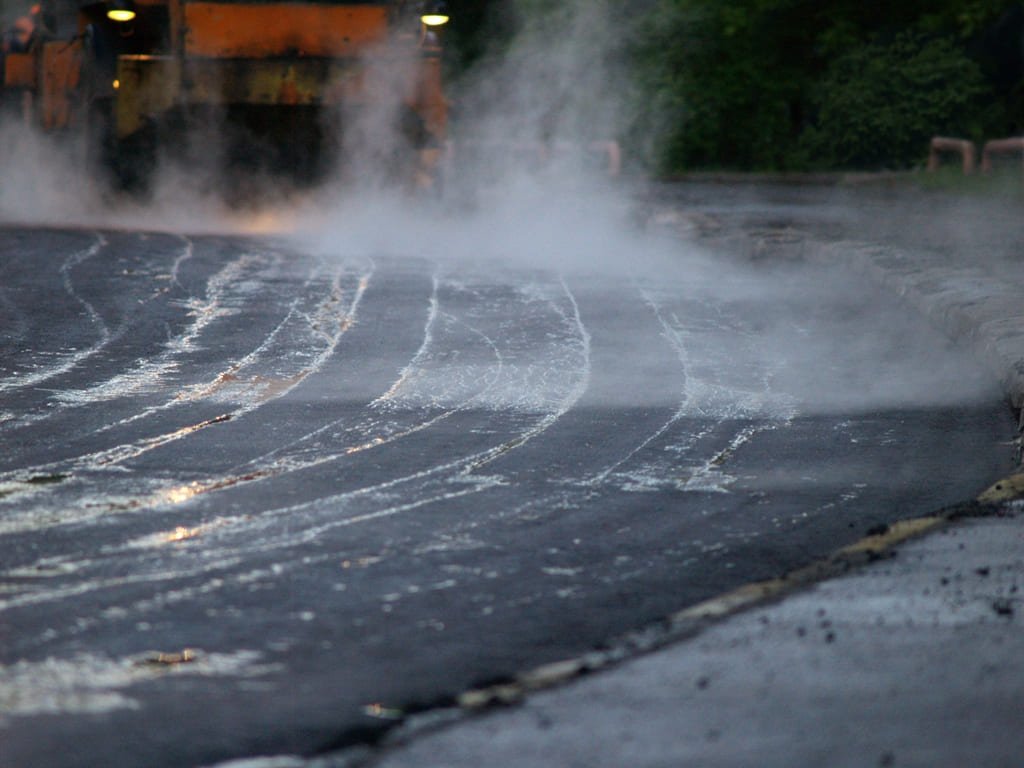Bitumen emulsions dispersed systems which consists mainly of bitumen and water, in which one liquid is dispersed in the other in the form of small droplets. The breaking (dispersion) of bitumen in water is usually done in colloid mills, also referred to as homogenizers or dispersers.
Regardless of the actual design of the equipment, the process occurs as follows: first bitumen is split into separate droplets. The large spherical droplets are deformed into cylindrical shapes in the flow.
With a certain length to diameter ratio, such cylinders split into a smaller and a larger droplet. The process continues until the larger droplet size is equal with the smaller droplet (0.01 micron).
Such system needs aggregate strength, i.e. resistance to droplet coagulation. This is achieved by the third component, the surfactant, which concentrates on the phase boundary between bitumen and water. Surfactant molecules are adsorbed by bitumen surface and form a protective shell around them, preventing coagulation.
To make protective layers physically strong, the pH of the water phase must fall within a certain range. Hydrochloric acid is used for this purpose of cationic emulsions.
Therefore, a stabilizing shell of surfactant is formed on the surface of the dispersed bitumen droplets, preventing the droplets from sticking together and the emulsion from separation and breaking.
Cationic bitumen emulsions are the more common type at this time.
The process of emulsion production includes the following stages:
- preparation of bitumen, including its delivery from storage, heating to the process temperature etc;
- preparation of a surfactant water solution, including supply and portioning of water, surfactant and hydrochloric acid, their heating and mixing;
- emulsion production by mixing bitumen with the water solution;
- emulsion storage and unloading into transportation vehicles;
- generation of heat to heat the bitumen and the surfactant solution.
Transportation and storage of bitumen emulsions
An emulsion, a cold product, can be stored for several months at temperatures above 0°С. Some separation of emulsion without changes in bitumen concentration along the container vessel height and formation of lumps or globs is allowed in long term storage (over two weeks). Emulsion from storage must be thoroughly stirred before use.
Emulsions can be stored either at the production site or at the location of their use. In both cases the best storage containers are vertical cylinders.
Emulsion containers must be cleaned, without residue from other materials. They should be washed with hot water or steam purged before use. To protect the emulsion from rain water, prevent its contamination and evaporation of water from the emulsion, the containers must be tightly closed.
Emulsions can be transported by bitumen sprayers, bitumen carriers, railroad tanks, trucks with 1-2 ton tanks, smaller metal barrels, from 100 to 500 liters each. Before offloading the emulsion to a vehicle, it is run through a 3 mm mesh filter.

